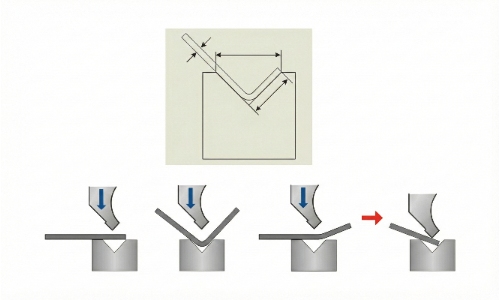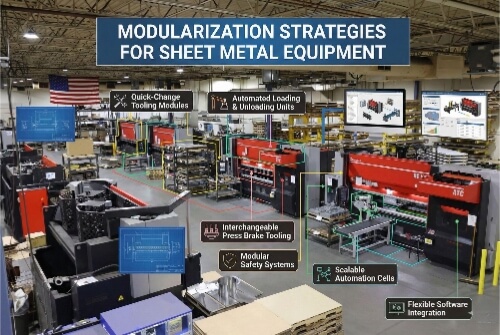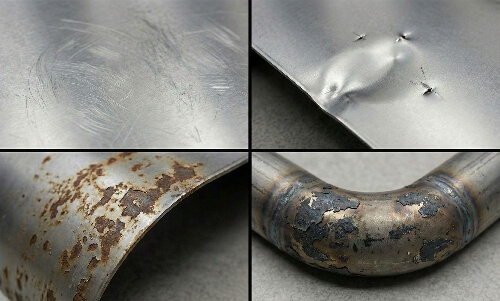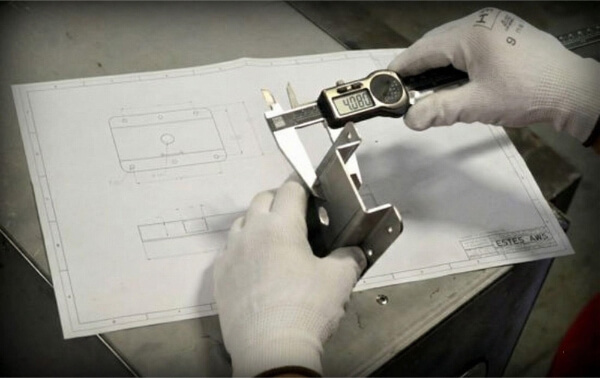More and more industries are using titanium, changing how buyers view pricing. The cost of titanium per pound isn’t always clear. It can change due to supply problems, rising demand, or how it’s made. These changes often cause delays in decision-making and can increase project costs. Buyers need to understand what affects titanium prices. That way, they can make better decisions and avoid spending more than required.
Titanium prices can feel confusing at first. But there are clear reasons behind the numbers. Once you understand what affects the cost, planning and staying within budget is easier. In the sections below, we’ll break down the key factors and show how you can use this insight to make better choices.
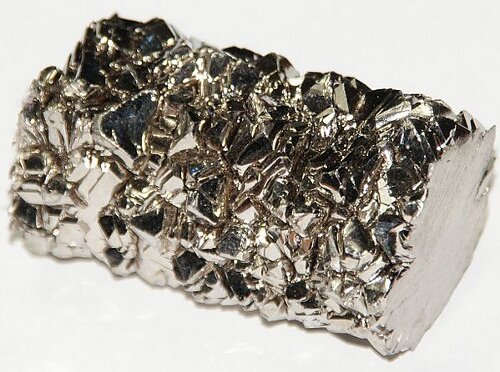
Overview of Titanium
Titanium is a strong metal that weighs much less than steel. It resists rust, heat, and chemical damage. Manufacturers must extract titanium from ores like rutile and ilmenite to get it. This process needs high heat and special equipment, which adds cost.
Titanium stays strong at high temperatures. It doesn’t rust in water or sweat. That’s why it’s used in aircraft engines, implants, and offshore structures. It lasts a long time and needs little upkeep.
Titanium’s high strength-to-weight ratio means you get strong parts without the extra weight. For many industries, this saves fuel and cuts down on wear and tear. These advantages explain why buyers are willing to pay more for titanium.
Primary Factors That Influence Titanium Cost
The price of titanium isn’t just about its weight. Many hidden costs shape what buyers end up paying. Let’s take a closer look at what drives titanium pricing.
Raw Material Extraction and Processing
Titanium doesn’t exist in pure form in nature. It’s taken from ores like rutile or ilmenite. Getting it out takes heat, chemicals, and time. The most common method is the Kroll process. This process turns ore into a sponge-like form using chlorine gas and magnesium. It’s slow and costly.
After that, the sponge is melted and formed into bars or sheets. Each step adds more cost. Titanium must also be kept clean during handling. Any contamination can ruin the metal. Titanium takes more effort to make than steel or aluminum, so it’s more expensive.
Energy and Labor Costs
Titanium needs a lot of heat to process. This means high electricity use. If energy is expensive in a region, it pushes up titanium prices.
Labor also matters. Skilled workers are needed at every stage, and this isn’t a process that can be rushed. Trained staff costs more, especially in advanced facilities. These wages add to the final price of the material.
Supply and Demand Dynamics
Titanium supply depends on mining, transport, and global politics. If a mine shuts down or a major exporter limits sales, supply drops, driving prices up.
On the demand side, industries like aerospace, medical, and energy are big users. When these sectors grow, demand rises. This can lead to price spikes. If the market slows, demand and prices fall. These changes can happen quickly and often.
Grade and Purity
Titanium comes in different grades. Each grade has its strengths, corrosion resistance, and ease of use. For example, Grade 2 is pure and easy to form. Grade 5, often used in aircraft, is much stronger because it combines other elements.
Higher-grade titanium costs more, as it takes more work to make and test. Purity also affects price. Titanium for medical use must meet strict rules, and the cleaner it needs to be, the more expensive it is to produce.
Technological Innovations
New technology can lower production costs. Methods like HAMR or the Fray-Farthing-Chen process could cut steps and save energy. These are still developing but may change the market over time.
Better machines and automation also help. If a factory can reduce waste or speed up work, it can offer lower prices. These changes take time but help reduce costs in the long run.
Geopolitical Factors
Titanium supply is closely tied to politics. Major producers include China, Russia, and Japan. If any of them limit exports or raise taxes, prices go up.
Events like sanctions, wars, or trade policy changes can disrupt supply. When that happens, buyers have to look elsewhere—and often pay more. Even if demand stays steady, political issues can cause prices to rise fast.
Global Economic Situations
When the global economy is substantial, titanium demand increases. Airlines buy more planes, hospitals need more implants, and industries choose higher-grade metals, pushing prices up.
In a weak economy, demand drops, projects are paused or canceled, and buyers choose cheaper materials, leading to lower prices. Inflation, currency shifts, and shortages also affect titanium costs. The overall economy plays a big part in year-to-year pricing.
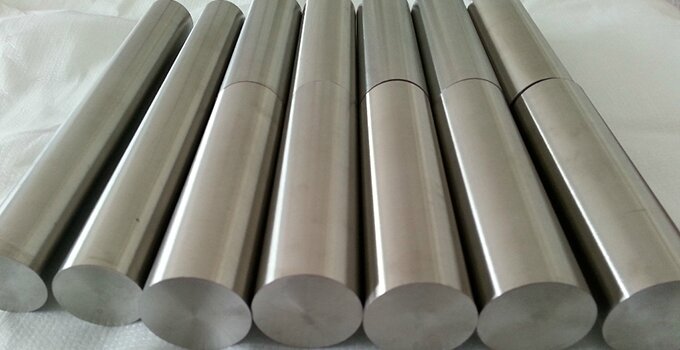
How Much Does Titanium Cost Per Pound?
Titanium pricing changes based on the form, grade, and current market trends. Below are some typical price ranges to give you a general idea of what to expect.
Commercially Pure Titanium (Grades 1 and 2)
Grade 1 and Grade 2 are the most common forms of pure titanium. They are softer, easier to shape, and cost less than alloyed grades. Prices for these typically range from $6 to $10 per pound, depending on market conditions and volume.
They are often used in chemical processing, heat exchangers, and marine parts. Because they don’t require as much alloying or testing, they stay on the lower end of the price range.
Titanium 6-4 Alloy (Grade 5)
Grade 5 titanium, called Ti-6Al-4V, is much stronger and more heat resistant. It is widely used in aerospace, motorsports, and medical implants. Due to its added aluminum and vanadium, it’s harder to produce and machine.
Prices for Grade 5 can range from $10 to $30 per pound. High precision needs and tighter specs can push this cost higher.
Titanium Scrap
Titanium scrap is cheaper than new material. It’s often recycled into sponge or alloy feedstock. Prices vary based on purity and form. Clean, sorted scrap can sell for $1 to $4 per pound, while mixed or contaminated scrap brings less.
Scrap is helpful for cost-cutting in non-critical applications. It offers savings if material specs are not too strict.
Titanium Sheets
Titanium sheets are flat-rolled and come in various thicknesses. Sheet pricing includes both material and processing costs. Grade 2 sheets may sell for $10 to $15 per pound. Grade 5 sheets can go above $30 per pound.
The thickness, width, and surface finish all impact price. Sheets used in aerospace or medical sectors often cost more due to tight tolerances.
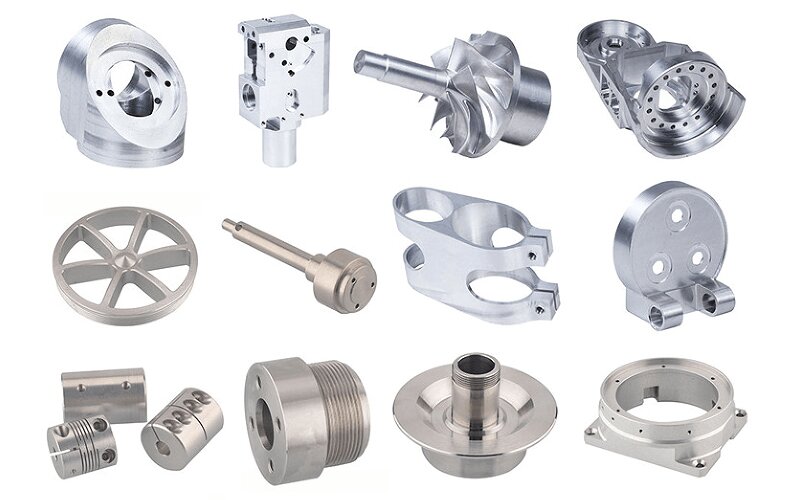
Long-Term Pricing Trends
Here’s a look at how titanium prices have moved over time. We’ll explore past swings, key events, and what analysts expect ahead.
Historical Price Fluctuations
- 2000–2010: Titanium prices started low. Scrap sold for $2–3 per pound in the early 2000s. By 2006, aerospace demand drove prices up to $6–7/lb. 2008 the financial crisis pushed prices down to $3–4/lb.
- 2010–2020: Prices mostly held between $4 and $7/lb. Demand stayed stable, with support from the aerospace and medical sectors. By the mid‑2010s, the oversupply from China had dropped the range to $3–4/lb. Later in the decade, new tech like metal 3D printing helped prices recover to $5–7/lb by 2020.
Key Events That Affected the Market
- Commodities super‑cycles: Global growth in the 2000s and early 2020s increased demand and increased raw material prices.
- COVID‑19 impact: Lockdowns in 2020 slowed demand. Supply chains stalled. After recovery, spending on infrastructure and defense lifted prices.
- Russia‑Ukraine war (from February 2022): Western sanctions disrupted titanium sponge exports from key producers like Russia. This led to higher prices for titanium alloys globally.
Current Forecasts and Market Outlook
- As of mid‑2025, commercially pure titanium averages about $6–9 per pound. Aerospace‑grade alloys like Grade 5 often exceed $25/lb. These levels reflect continuing demand from aerospace, medical, and defense sectors.
- Scrap titanium prices are rising. Industry forecasts show clean scrap in 2025–2030 could hit $9–12 per pound, with occasional peaks to $15/lb if supply tightens.
- Producer price indexes track inflation in mill‑shape alloys. In 2024, the US PPI rose 3.37% compared with 2023. In June 2025, the index sits at 233.7, showing ongoing inflation pressure.
- The titanium alloy market is expected to grow at a CAGR of around 3.5% to 7% through 2030. Growth is driven by aerospace, defense, medical, and infrastructure projects worldwide.
Summary Table
| Period / Forecast | Rough Price Range ($/lb) | Notes |
|---|---|---|
| 2000–2006 | $2–3 → $6–7 | Rise driven by aerospace demand |
| 2008 (financial crisis) | ~ $3–4 | Sharp drop during recession |
| 2011–2014 | $4–6 | Stable demand from medical/aero sectors |
| 2015–2016 | ~ $3–4 | Chinese oversupply |
| By 2020 | $5–7 | Recovery via new manufacturing tech |
| 2021–2025 | Pure: $6–9; Alloy: > $25 | Rising costs, geopolitical impacts |
| 2025–2030 (forecast) | Scrap: $9–12 (peak $15), Alloys ↑ | Ongoing growth, tight supply chains |
Applications Affecting Price
Titanium is used across many industries, each of which affects its price in different ways. The size of demand, quality requirements, and how fast a sector grows all play a role.
Automotive
Some car makers use titanium, especially in high-end or performance models. It helps reduce weight without losing strength. You’ll find it in parts like exhaust systems, valves, and sometimes structural components.
But titanium is still expensive. That limits its use. Demand might grow if more companies push for fuel efficiency or emissions cuts. Even small changes in this sector can impact bulk pricing across the market.
Aerospace
This is the largest buyer of titanium. Planes need strong, light, and heat-resistant materials. Titanium is used in airframes, landing gear, and engine parts.
When plane production rises, titanium orders spike, often leading to higher prices. Aerospace also uses premium grades, which cost more per pound. Military aircraft need to add even more pressure to supply chains.
Renewable Energy
Wind and solar systems use titanium for parts exposed to weather or seawater. It’s common in mounting systems and offshore equipment. Geothermal power plants use it in piping and heat exchangers because it resists corrosion.
As clean energy projects grow, so does demand. Large builds, especially offshore, require large volumes of titanium, which puts added pressure on the supply side.
Medical Sector
Titanium is widely used in healthcare. It’s found in implants, surgical tools, and dental devices. The metal doesn’t react with body tissues, and it lasts a long time.
This industry doesn’t use large amounts by weight but pays more per pound. That’s because of strict purity, certifications, and tight controls. With aging populations and growing healthcare budgets, demand stays steady and reliable.
Titanium vs. Competing Metals: Cost Comparison
Titanium is strong and reliable, but it is not the only option for tough jobs. Here’s how it compares to other common metals, such as aluminum, steel, and copper, in terms of cost and performance.
Aluminum
Aluminum is much more affordable than titanium. It usually costs around $1 to $2.5 per pound. Aluminum is lightweight and resists corrosion, but it doesn’t offer the same strength.
Aluminum is also easier to form and machine, making it popular in consumer products, automotive parts, and aircraft components. If weight matters but the budget is tight, aluminum is often the best fit.
Steel
Steel is the most budget-friendly metal in the group. Most types cost less than $1 per pound. It’s strong and easy to weld or machine, but much heavier than titanium.
Carbon steel and stainless steel are everywhere—from buildings and bridges to tools and appliances. Steel is the most cost-effective option if weight isn’t a concern.
Copper
Copper usually costs between $4 and $10 per pound. Its biggest strength is conductivity, which means it moves electricity and heat very well. However, it’s soft and not great in saltwater or acidic environments.
Copper is used in wiring, circuit boards, and plumbing systems. It doesn’t match titanium’s strength or corrosion resistance, but it’s the top choice for electrical work.
Smart Buying Strategies for Titanium
Titanium isn’t cheap, but there are ways to lower your costs. Thoughtful planning and the correct sourcing approach can make a big difference.
Bulk Discounts & Long-Term Contracts
Buying in bulk often leads to better pricing. Suppliers are more willing to cut costs if you’re ordering large volumes. If your production schedule allows, ordering in full pallet or container loads can reduce the per-pound rate.
Long-term contracts help, too. Locking in a supply deal over 6–12 months may avoid sudden price spikes. This works well when titanium prices are stable or expected to rise. It also gives suppliers more predictability, which they often reward with lower pricing.
Spot Prices vs. Contract Pricing
Spot pricing means you pay the current market rate at the time of purchase. This works best when prices fall or you only need a small quantity.
Contract pricing, on the other hand, gives more control. It sets a fixed or adjustable rate over time, often based on volume or index-based formulas. Contracts reduce risk and help with budgeting, especially for large projects or steady production needs.
Best Regions to Source Cost-Effectively
Asia—especially China and India—often offers lower titanium prices due to local production and lower labor costs. However, shipping time and quality control can be challenges.
Eastern Europe and Russia are key producers, but geopolitical risks can disrupt supply. The U.S. and Japan offer high-quality materials, but usually at higher costs.
Conclusion
Titanium is strong, light, and highly corrosion-resistant, but it costs more. Its price per pound depends on many factors, including grade, purity, processing steps, energy use, and global demand. Market trends, regional conditions, and specific industry needs also shape pricing. Buyers who understand these drivers can plan better, reduce risks, and find more cost-effective solutions.
Looking for a reliable titanium parts supplier? Contact us today for a fast quote and expert support tailored to your project needs.
FAQs
What grade of titanium is most affordable?
Grade 2 titanium is usually the most affordable among commercially pure grades. It has good strength, resists corrosion, and works for many general applications. It costs less than higher-performance grades like Grade 5 (Ti-6Al-4V), which are more expensive due to added alloying elements and stricter processing requirements.
What is the current average cost of titanium per pound?
As of mid-2025, the average price for commercially pure titanium typically ranges from $6 to $10 per pound, depending on grade, form, and supplier. Alloyed grades like Grade 5 can go up to $20+ per pound.
How do different forms of titanium, such as bars, ingots, and sheets, compare in price?
Sheets and plates usually cost more per pound than bars or ingots because sheets require extra rolling and finishing steps. Ingots are the starting point and are less expensive per pound, while processed forms like sheets and rods have added value and higher prices.
How do Bulk Purchasing and Custom Orders Affect Titanium Pricing?
Buying titanium in large quantities often lowers the price per pound. Suppliers may give discounts for bulk orders or long-term contracts. Custom shapes, tight tolerances, or special certifications can raise costs since they require more processing and quality checks.
How often does the price of titanium change?
Titanium prices can change monthly or even weekly. Market demand, energy costs, global events, and supply chain changes all affect the price. Staying in touch with suppliers and watching market updates can help you buy at the best time.
Hey, I'm Kevin Lee

For the past 10 years, I’ve been immersed in various forms of sheet metal fabrication, sharing cool insights here from my experiences across diverse workshops.
Get in touch

Kevin Lee
I have over ten years of professional experience in sheet metal fabrication, specializing in laser cutting, bending, welding, and surface treatment techniques. As the Technical Director at Shengen, I am committed to solving complex manufacturing challenges and driving innovation and quality in each project.

